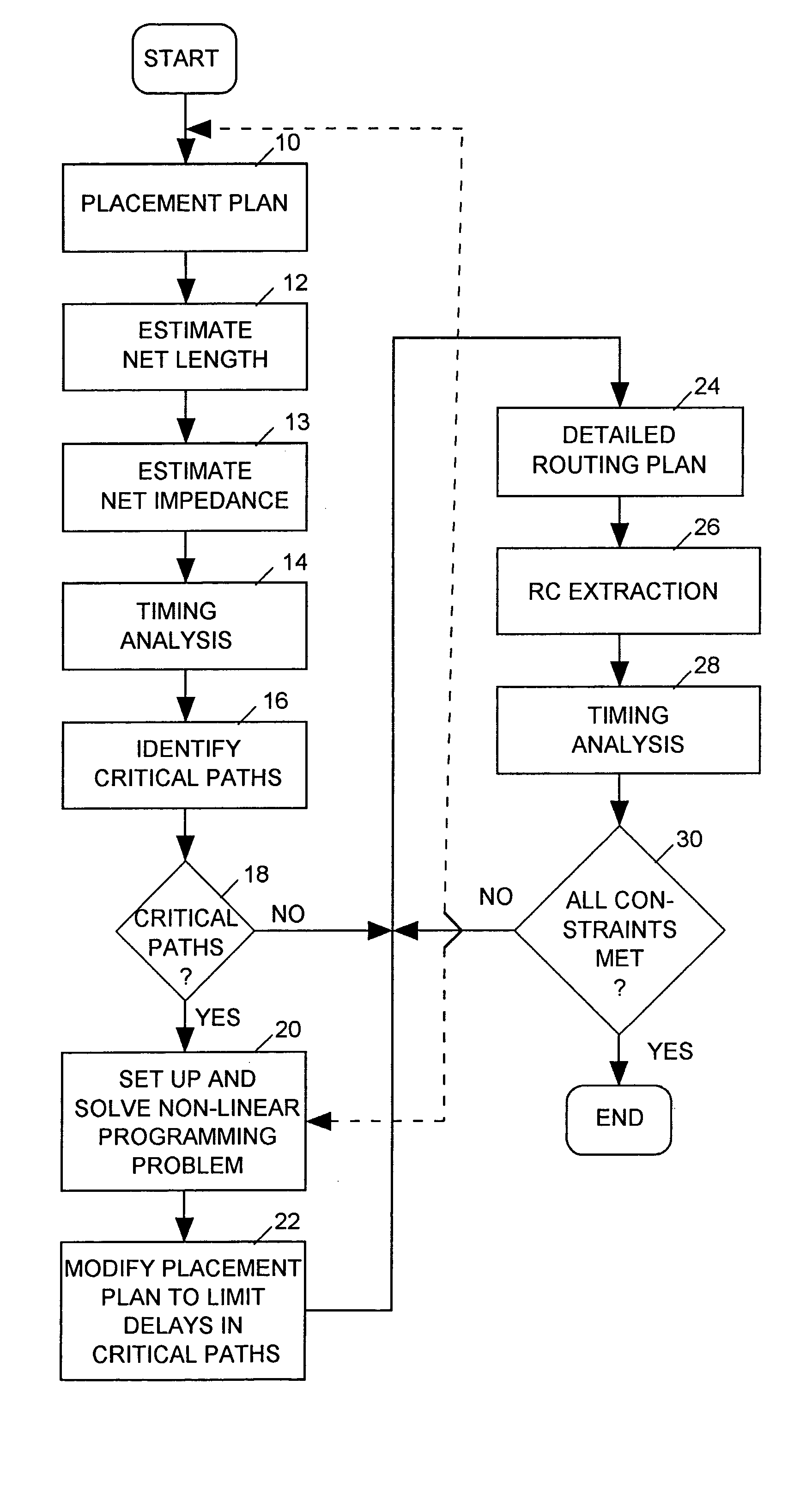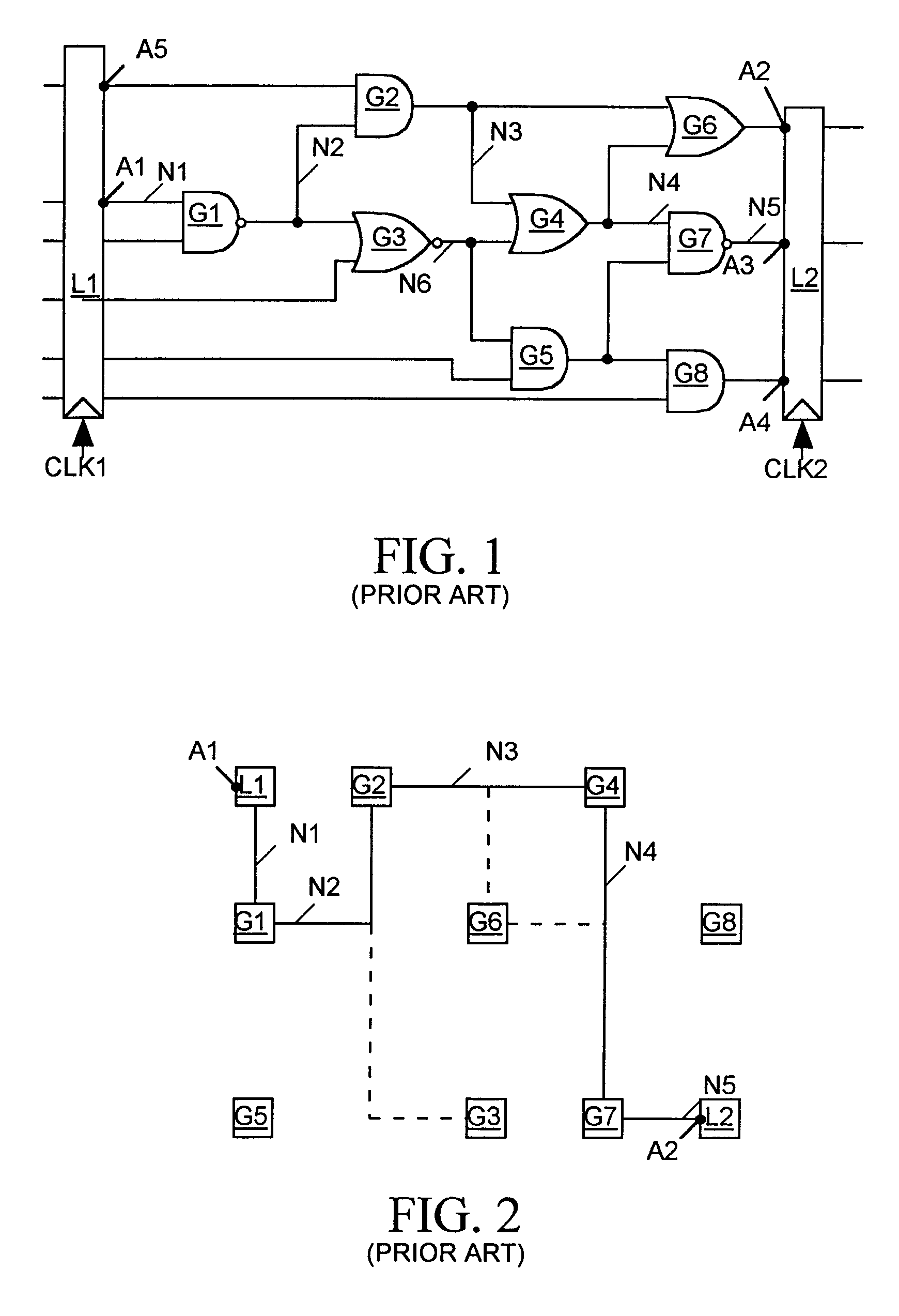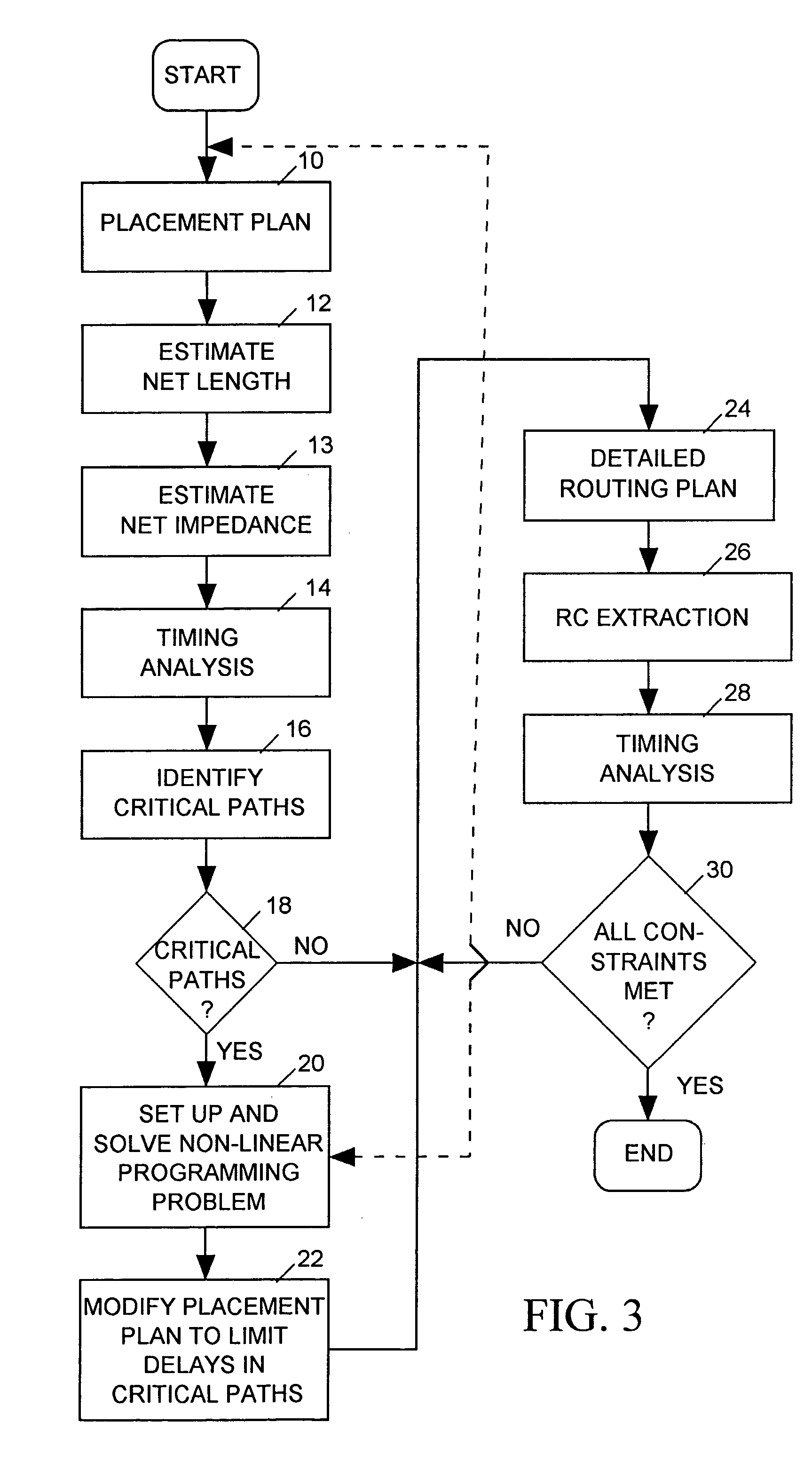Post-placement timing optimization of IC layout
a timing optimization and placement technology, applied in the direction of software simulation/interpretation/emulation, instruments, program control, etc., can solve the problems of difficult to determine the timing constraint of a signal path, high iterative and time-consuming placement and routing process, and more difficult for the algorithm to meet the constraints of other nets
- Summary
- Abstract
- Description
- Claims
- Application Information
AI Technical Summary
Benefits of technology
Problems solved by technology
Method used
Image
Examples
Embodiment Construction
[0032]The present invention relates to a method for optimizing an integrated circuit (IC) placement plan to improve the likelihood that a routing plan based on the placement plan will satisfy signal path timing constraints and to software stored on computer-readable media for enabling a conventional computer to implement that method. Suitable computer-readable media for storing the software include, but are not limited to, compact disks, floppy disks, hard disks, and random access or read only memory. While the specification describes at least one exemplary embodiment of the invention considered a best mode of practicing the invention, the invention is not limited to the particular example(s) described below or to the manner in which they operate.
[0033]An IC designer typically produces a high-level language, register transfer level (RTL) netlist describing a digital IC mainly in terms of the logic the IC is to implement. The designer then uses computer-aided synthesis tools to conve...
PUM
 Login to View More
Login to View More Abstract
Description
Claims
Application Information
 Login to View More
Login to View More - R&D
- Intellectual Property
- Life Sciences
- Materials
- Tech Scout
- Unparalleled Data Quality
- Higher Quality Content
- 60% Fewer Hallucinations
Browse by: Latest US Patents, China's latest patents, Technical Efficacy Thesaurus, Application Domain, Technology Topic, Popular Technical Reports.
© 2025 PatSnap. All rights reserved.Legal|Privacy policy|Modern Slavery Act Transparency Statement|Sitemap|About US| Contact US: help@patsnap.com



